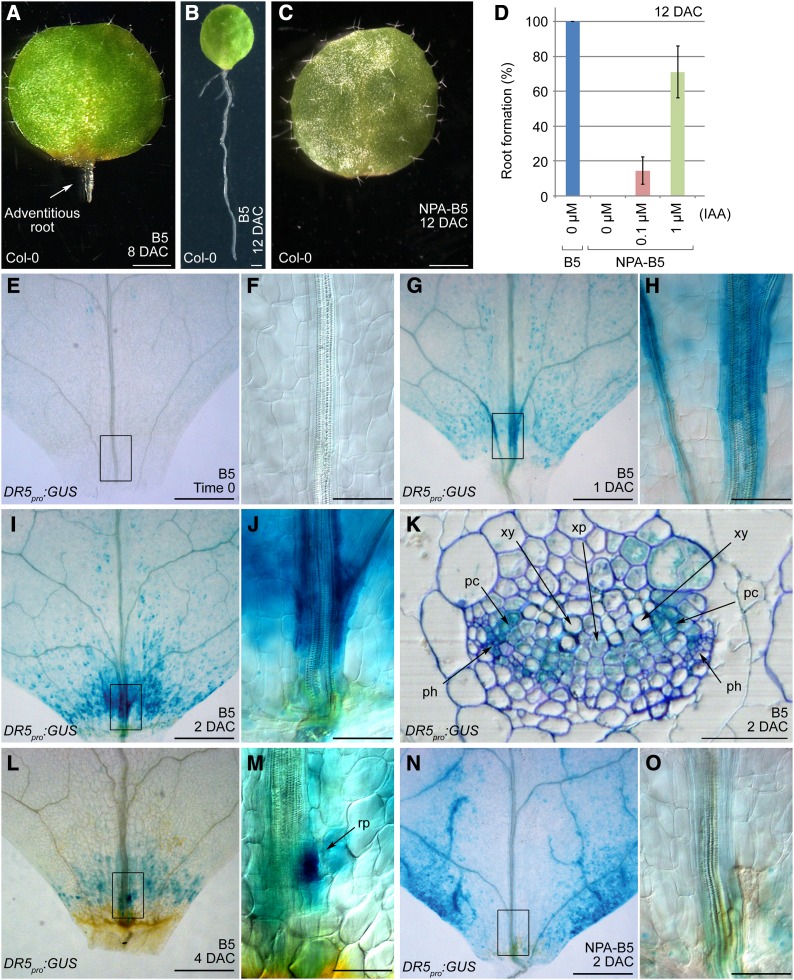Figure 1.
Wound-Induced Auxin Accumulation and Polar Transport Are Essential for Adventitious Root Formation.
(A) and (B) Leaf explants at 8 (A) and 12 DAC (B) on B5 medium.
(C) The 12-DAC leaf explant on NPA-B5. A total of 30 leaf explants were analyzed, and they all failed to form adventitious roots.
(D) Addition of IAA to NPA-B5 could rescue the NPA-caused rooting defect. Bars show sd with three biological repeats. n = 30 in each individual repeat.
(E) to (J) GUS staining at time 0 ([E] and [F]), 1 DAC ([G] and [H]), and 2 DAC ([I] and [J]) of DR5pro:GUS leaf explants cultured on B5 medium.
(K) Transverse section through the GUS-staining region of a 2-DAC DR5pro:GUS leaf explant grown on B5 medium. Note that GUS staining was mainly concentrated in the procambium and the nearby parenchyma cells. See the similar section without toluidine blue staining in Supplemental Figure 1.
(L) and (M) GUS staining of a 4-DAC DR5pro:GUS leaf explant on B5 medium. Arrow in (M) indicates an emerging root primordium.
(N) and (O) GUS staining of a 2-DAC DR5pro:GUS leaf explant cultured on NPA-B5.
(F), (H), (J), (M), and (O) are close-ups of the boxed regions in (E), (G), (I), (L), and (N), respectively. rp, root primordium; xy, xylem; xp, xylem parenchyma cell; pc, procambium; ph, phloem. Bars = 1 mm in (A) to (C), 500 μm in (E), (G), (I), (L), and (N), 100 μm in (F), (H), (J), (M), and (O), and 50 μm in (K).

